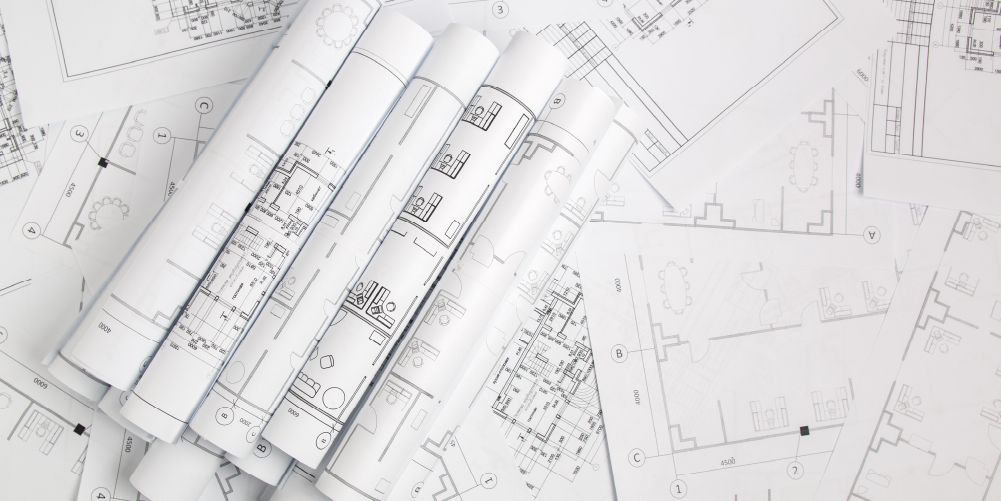— 7 min read
What Is a General Contractor?
Last Updated Jun 19, 2024
Last Updated Jun 19, 2024

In the construction industry, a general contractor is the person or company responsible for overseeing a construction project. Property owners will typically hire general contractors to ensure a construction job is completed safely, on time, and according to specifications.
General contractors, often called GCs, are important for both complex commercial construction, and straightforward residential projects. More specific tasks — like replacing a roof or laying new flooring — may be outsourced to different types of subcontractors. However, a GC is likely needed for any project that requires coordinating several stages or multiple specialty contractors to complete the job.
Read on to learn more about the role general contractors play in construction, how to determine if a GC is required for a project, and how GCs are licensed and paid.
Table of contents
What does a general contractor do?
A GC is responsible for seeing a construction project through from beginning to end. Essentially, a GC acts as a go-between between the property’s owner and everyone who brings the building to life, including materials suppliers, vendors, and tradespeople.
The GC’s responsibilities depend on the delivery method used in the project. For example, with design-build projects, either the architect or the GC manages the entire project from start to finish. This means the GC may be responsible for managing both the design, and construction, of a project.
For a design-bid-build project, a design team and GC both report to the owner under separate contracts. The design team develops the contract documents: drawings, specifications, and other exhibits. Once completed, the designs are sent out for GCs to provide a bid on the project and then see the project through to completion.
The GC has important responsibilities before, during, and after the actual construction process that help with getting the project completed.
Before construction
During the preconstruction phase, a GC may be responsible for some or all of the following:
- Developing a construction budget
- Hiring subcontractors to complete specialized tasks
- Collaborating with the architect to make sure the design is realized
While all of these tasks begin before construction starts, the GC will continue to manage the budget, work with the architect, and interact with additional contractors throughout the remainder of the project as well.
During construction
While construction is taking place, the general contractor is typically responsible for:
- Overseeing construction work according to contract specifications
- Keeping the project on schedule
- Coordinating specialty contractor timing
- Inspecting construction quality and/or scheduling inspections
- Making payments to specialty contractors and vendors
- Collecting and tracking lien waivers
Overall, a GC’s role during construction is to make sure that everyone is working well together and reacting to challenges that could negatively affect the schedule or budget.
After construction
Once construction work is completed, a GC still has responsibilities, including:
- Collecting and tracking any lien waivers
- Ensuring that specialty contractors are paid for their work
- Managing issues with payments down the payment chain
Since the GC is the main point of contact between subcontractors and the building owner, the GC ensures that work is completed to specification and then payment is disbursed.
In short, a general contractor manages all of the moving parts that make it possible to take a construction project from beginning to end. The GC often assumes a managerial role while subcontractors complete the required labor.
On smaller-scale projects, the GC may complete some of the work themselves, only contracting out specialized work.
GCs are just one of many different types of contractors, but they serve a crucial role in ensuring a project gets completed and everyone involved in the construction process gets paid.
Stay updated on what’s happening in construction.
Subscribe to Blueprint, Procore’s free construction newsletter, to get content from industry experts delivered straight to your inbox.

GC licensing requirements
Generally, state laws require that contractors, including GCs, are licensed. Licensing has benefits for all stakeholders involved in a construction project. Here are a few ways that licensing requirements benefit various parties:
- States and municipalities use licensing to regulate contractors and confirm that they follow guidelines for insurance, taxes, and safety.
- Property owners benefit from licensing as well, since they can find contractors who have established their credibility and trustworthiness.
- Contractors themselves gain advantages from being licensed, including the ability to protect their lien rights in many states.
Working with licensed contractors is an important part of making sure that everyone involved in a construction project gets paid.
The bidding process for general contractors
For commercial and public construction projects, the bidding process is generally the entry point for a GC on the project. The process begins when the project owner or architect shares that a project is ready for bid and makes the bid documents available to GCs.
Additionally, the owner or architect sends out a request for proposal (RFP), request for quote or qualifications (RFQ), or an invitation to bid (ITB) package. This may be sent to select GCs, or it may be shared openly for all available GCs to bid.
Afterward, GCs generally follow a sequence of events in an effort to win a contract for the project.
- Once the bidding documents are available, GCs begin their own bidding process, subdividing the scope of work and soliciting bids from a pool of specialty contractors
- The GC reviews bids from contractors and selects winning bids
- Then the GC puts together a proposal to submit to the owner or architect
In some cases, the owner or architect may take additional steps, like creating a scoring system, or interviewing multiple GCs to help choose the best candidate for the project.
Courses about construction.
For construction.
Unlock your career potential with our free educational courses on Health & Safety, Data in Construction, and more.
Differentiating between construction contractors
While GCs are important for managing the overall building process, they aren’t the only contractors or managers in construction. On most job sites — especially for large-scale projects — a variety of other roles will also be required. Here are a few that you should know:
- General contractor / Prime contractor: Whoever holds the main contract with the owner is considered the prime contractor. The GC can also be the prime contractor, but some project delivery methods call for non-GCs to be prime contractors.
- Construction manager: A construction manager (CM) has similar responsibilities to a GC, but they are often employed directly by the owner, who tasks the CM with estimating costs, hiring a GC, or performing any other duties required to manage a project.
- Specialty contractor: The GC hires a number of specialists, known as specialty contractors, to perform specific tasks on the construction site. In a typical project, the GC is paid directly by the owner while specialty contractors are paid by the GC.
These are just a few of the key members working on a construction project, and there are many more who work for construction companies in many capacities.
A general contractor’s role in the payment process
Generally, GCs are paid directly by the property owner. That said, payment in construction can often be confusing — and payment for GCs is no exception.
GCs are an important part of the payment chain, which is the way that money moves from the property owner down to various tiers of contractors and suppliers. Poor communication and visibility can make this process slow, leading to delayed payments for everyone involved in a project.
Here are some of the problems that GCs can face in the payment process:
- Visibility can be limited. A GC may only be familiar with their immediate subcontractors but not sub-subcontractors or suppliers.
- Risk is inherent. A GC can face risks of non-payment if they don’t secure lien waivers.
- Payment may be contingent. A GC has to fulfill requirements to get paid as well, further complicating the flow of funds down the payment chain.
Fortunately, there are ways to speed up payment in construction and make sure that everyone is paid on time for their work. Typically, increasing the visibility of subcontractors and sub-subcontractors, streamlining paperwork, and maintaining open lines of communication all go a long way toward resolving payment delays.
Was this article helpful?
Thank you for your submission.
93%
7%
You voted that this article was . Was this a mistake? If so, change your vote here.
Scroll less, learn more about construction.
Subscribe to The Blueprint, Procore’s construction newsletter, to get content from industry experts delivered straight to your inbox.
By clicking this button, you agree to our Privacy Notice and Terms of Service.
Categories:
Tags:
Written by
Daniel Gray
28 articles
Daniel is an educator and writer with a speciality in construction. He has been writing construction content for Procore since 2022, and previously served as a Procore Content Manager before continuing to pursue an education career as an Assistant Headmaster for Valor Education in Austin. Daniel's experience writing for construction — as well as several clients under an agency — has broadened his knowledge and expertise across multiple subjects.
View profileExplore more helpful resources

Types of Construction Specifications: Understanding the Difference
On a construction project, the specification book, often referred to as the “spec book,” typically contains detailed descriptions of the materials, products, systems and workmanship required. The design team —...

Constructability Reviews: Moving From Design to Reality
Before concrete is poured or hammers are swung, a construction project requires the proper scrutiny to determine if the project is even possible. This is where a constructability review comes...

Virtual Design and Construction: Technology for Building the Future
Technology is transforming industries from the medical field to the world of entertainment. And construction — although a historically slow industry to adopt change — is no exception. Today, there’s...

Deciphering Construction Drawing Symbols
In construction, every blueprint and drawing is a complex web of information, distilled into symbols and lines that determine the work executed onsite. For those in the field, understanding these...